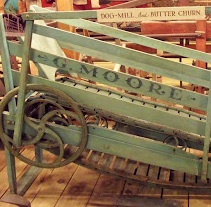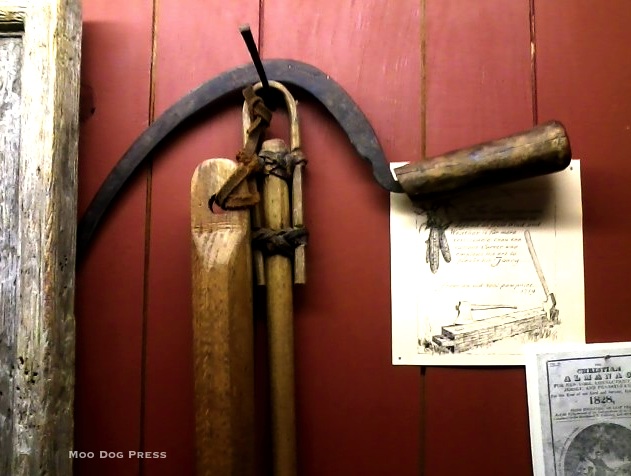Sloane’s Chauncey Peak, Connecticut, Alexander Hamilton, Amelia Earhart
Editor's note: The story continues, a portion has been archived.
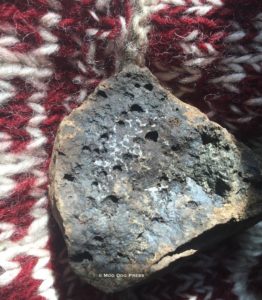
Basalt – also called traprock – with vesicles, the holes left behind where air was trapped when the rock was molten. CB/MDP
Chauncey Peak – a mountain promontory – portrait captured by Eric Sloane.
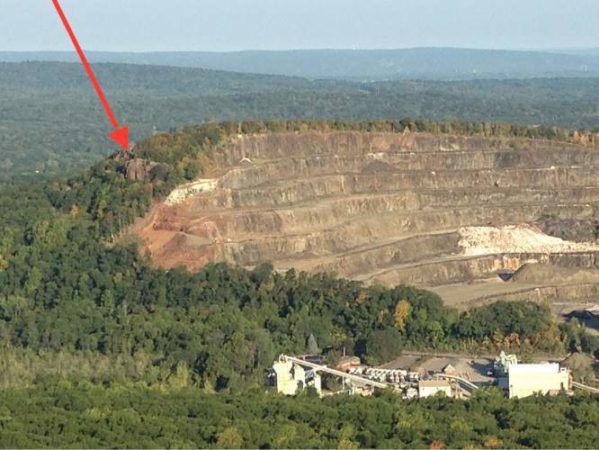
The arrow points to Chauncey Peak. The quarrying sculpts the backside of the mountain – Crescent Lake is on the other side, part of Giuffrida Park, named for a beloved city surgeon.
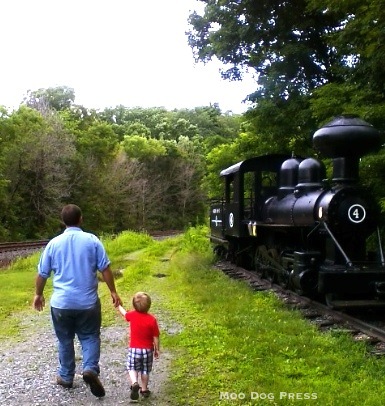
Horses and trains. Trains snort and steam – this iron horse (2015) in Kent, Connecticut; entrance to CAMA and the then-Sloane Stanley Museum. From our archives, family explorations.
The glimpse into the geological time exposed by the quarrying, fascinating.
For more about Eric Sloane, “a prolific member of the Hudson River School of painting, it is generally accepted that Eric Sloane was a artistic genius. Over his lifetime he wrote 38 or more books. It is estimated that he created nearly 15,000 paintings over his lifetime, mostly oil on masonite. He painted one almost every day, often before lunch, striving to do better than the day before.” – from Eric sloane.com biography page. To “meet” him, find and read his works, visit the places (open to the public) he loved. “While restoring a Connecticut farmhouse in the early 1950s, he began to identify with the Early American settlers. He first moved to the Lake Candlewood area, then to Merryall, CT (near New Milford) and in 1956 he moved to Warren, where he kept a home until 1985. It was at a Warren Library book sale that he is said to have discovered Noah Blake's diary, an original account of New England farm life in 1805. With Sloane's unique illustrations and commentary the diary became the framework for Sloane's most successful book, Diary of an Early American Boy: Noah Blake 1805. In 1975 Sloane built a home in La Tierra near Santa Fe, New Mexico, ‘Las Nuves' (The Clouds). From these two comfortable residences, ‘Mr. Americana' spent most of his later life preserving the practical architecture and stoic lives of the first European settlers, in oil paints and in writing.”
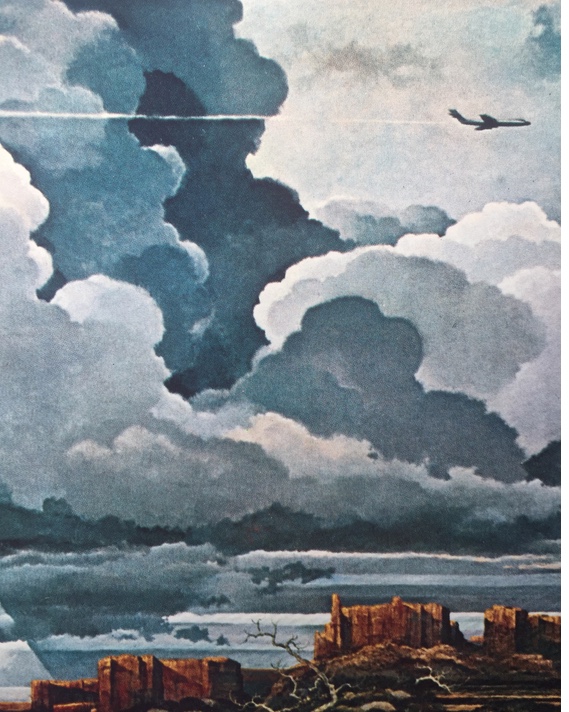
Eric Sloane's work from the booklet Celebrating The National Air and Space Museum, Smithsonian Institution.
Sloane's remains are buried in Kent at the Sloane Stanley Museum (now being renovated, Oct. 2018). By the way, the epitaph Sloane picked (“God Knows I tried“) is chiseled into a large fieldstone boulder which serves as a memorial. (You'll have to look to find it beside the museum, well worth the effort.) He succeeded beyond most humans in achievement – capturing images and knowledge, inspiring others, preserving touchstones to human endeavors and innovation. (The former International Silver headquarters building remains and is now home to offices for small businesses.) Sometimes a choice is made that will ripple out to generations yet unborn who will never know who decided this place matters and that it will stand. Ask the people who visit The Smithsonian, or who make the trek to Alexander Hamilton's home, The Grange.
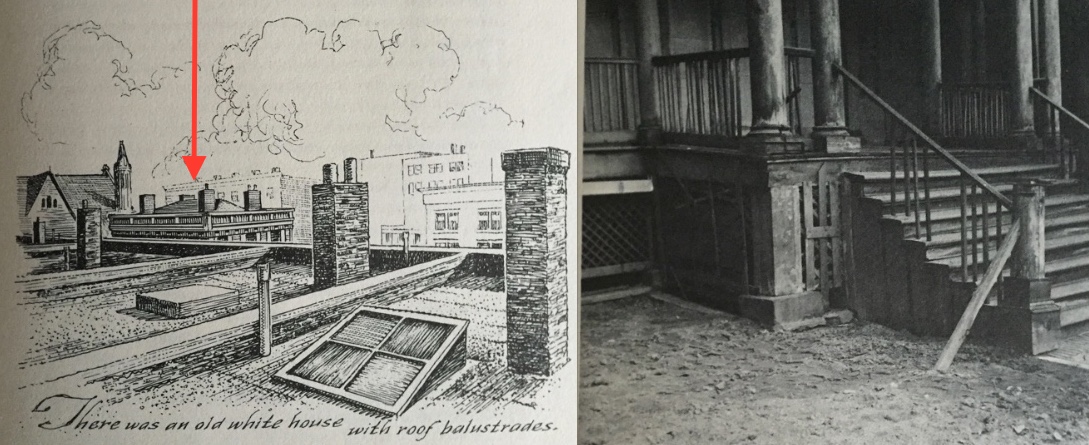
The red arrow at left points to the view Sloane saw of a building that made him curious enough to walk over and check it out. The structure was the former home of Alexander Hamilton. From the Book by Sloane, Mr. Daniels and The Grange.
Time flowing is nothing new in this ancient rift valley with resistant rock mountains left behind by volcanic flows long ago. Once a tropical climate was the norm here, when the verdant landscape hosted prehistoric beasts which left imprints of lives written in the rocks. The geology of the region “speaks” to those who know how to listen – geological language of vugs and striations, glacial grooves, fossil tracks. Basalt columns, fissures filled with glittering crystals, quartz and sediments. Natural springs abound here, and were once treasured for sources of clear, cold living water.
Because of the far-seeing vision of industrialist and philanthropist Walter Hubbard – also the president of the Bradley & Hubbard Manufacturing Company – a tower of stone stands on the peak above an 1,800-acre park that is named for him – Castle Craig can be seen in Sloane's painting. The land (now a park) was donated by Hubbard, but could have easily become a housing tract development with homes tightly packed in rows – or the hills quarried for building materials and leveled. Because of Hubbard, the woodland, greenspace, sheer cliffs and mountains remain.
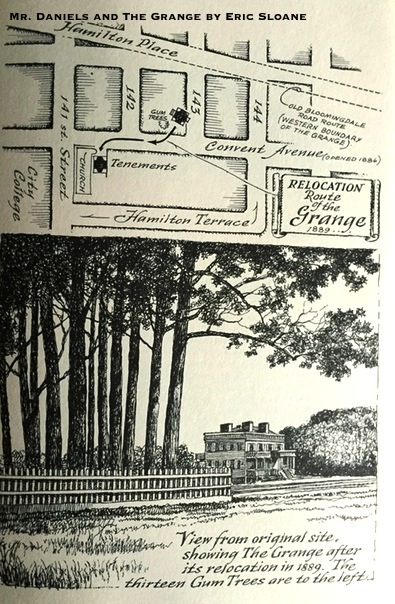
The original setting for The Grange, home of Alexander Hamilton and his family – from the book Mr. Daniels and The Grange illustrated and written by Eric Sloane. Mr. Daniels, by the way, was the caretaker who respected the structure and kept its stories when nearly all others couldn't care less.
Note: At the site of a Connecticut museum dedicated to Sloane and his life, grounds remain open; call ahead if visiting to confirm access. A version of this story first appeared in April 2017.
The first part of this story, linked here.

